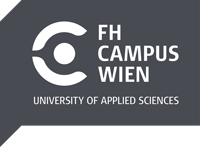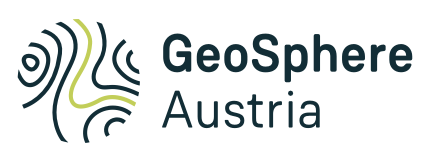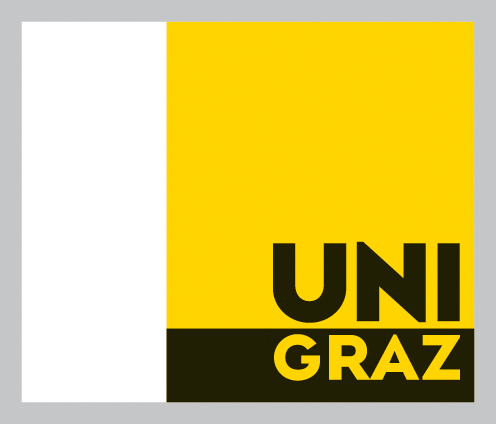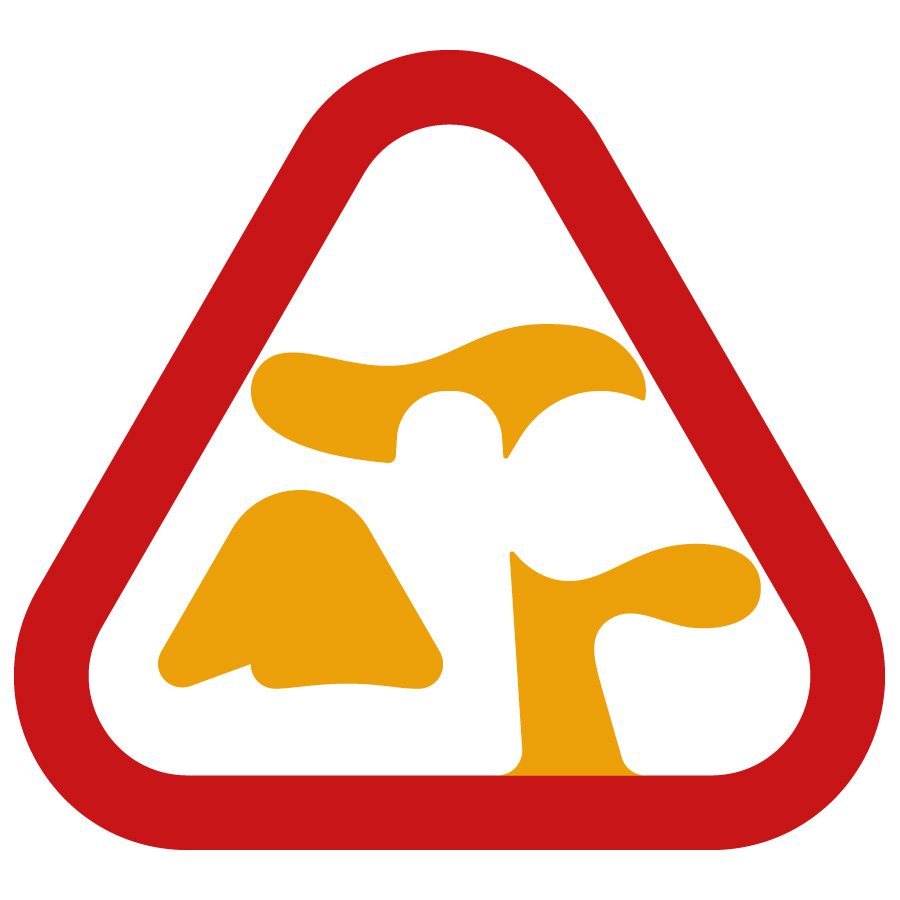
Florian Heigl
FH Campus Wien
The FH Campus Wien is the largest university of applied sciences in Austria. The FH Campus Wien offers over 6000 students a wide range of degree programmes in the fields of applied life sciences, engineering, building and design, public sector, health sciences, nursing science and social studies.
After a jointly organised successful workshop on "How can I integrate citizen science into my research" and the great organisation of the European Researcher's Night 2018 and 2019, we are now looking forward to further close cooperation in the field of citizen science with this diverse organisation.

Geosphere Austria
The Geosphere Austria (Zentralanstalt für Meteorologie und Geodynamik (ZAMG)) is also a partner in the Citizen Science Network Austria. Founded in 1851, ZAMG is the national meteorological and geophysical service of Austria.
We are particularly pleased about this partnership, as Geosphere Austra has a long tradition of involving citizens in the observation of weather and similar phenomena. But not only observations can be reported to the Geosphere Austria. The Geosphere Austria is involved in numerous projects with citizen participation, for example, the Trusted Spotter Network Austria has its own training for citizens to be able to forward important information to the weather service in real time in case of severe weather events and damage caused by extreme weather.
As the name of the institution already reveals, not only weather phenomena are researched at Geosphere Austra, but it is also possible to report when an earthquake is felt in Austria or even to observe damage caused by earthquakes.
We are very pleased that an organisation with so much experience in working with citizens* in research is a partner in our network.

CrowdWater
CrowdWater is a hydrological citizen science project of the University of Zurich. CrowdWater uses an app to collect data about water. No prior knowledge is required to participate.
What is the project about?
CrowdWater stands for independent and reliable data collection by anyone with an interest in water. The observations collected with the CrowdWater app can complement existing measurements and be used for hydrological modeling. The method is being developed in Zurich and will also be used in remote areas and regions with low data availability.
How can interested citizen participate?
With the CrowdWater app for Android and iOS, participants can collect data on water levels (with physical and virtual staff gauges), soil moisture, the condition of temporary streams, plastic pollution and water body type independently and without measuring devices. New observation stations can be created anywhere in the world or additional observations can be added to an existing station.
In the CrowdWater online game, the data quality of the uploads in the category "virtual staff gauge" is checked and if needed improved by contributing citizen scientists.
What happens with the data?
The data are published anonymously on our homepage and can be used for free for own projects. In the research project, the data is used for hydrological modeling so that its potential can be investigated. Two PhDs have already been completed in the CrowdWater project, and two more PhDs are currently ongoing. Currently, the focus is on temporary streams and water quality observations. The publications that have come out of the project so far can be found here. What the current research team is working on can be read here.
Interactive map:
Citizen Science Seminar
In 2022, poject coordinator Jan Seibert held a lecture about Crowdwater as part of the lecture series "Citizen Science Seminar" at the University of Natural Resources and Life Sciences Vienna (BOKU): "What we can all observe - Experiences from the CrowdWater Project" (in German). Here, you can watch the video recording of the lecture on our YouTube-channel:

Open Knowledge Maps
Open Knowledge Maps is a registered association that develops a revolutionary new method of visualizing scientific knowledge. Thus, one can see at a glance which areas have been researched on a certain topic or where there are still gaps.
Access to Open Knowledge Maps is free of charge and therfore enables people who are not employed by an academic institution to discover and use knowledge. If you are interested, please visit Open Knowledge Maps.

Vienna Kestrel
The kestrel is the most common raptor in the city of Vienna. Since 2010, the "Vienna Kestrel Project" has been investigating how these falcons have adapted to city life. A key component of our research is knowledge about nest locations which allow us to access broods for further investigation. The Vienna Kestrel Project was initiated by Dr. Petra Sumasgutner and Priv.-Doz. Dr. Anita Gamauf as a cooperation between the University of Vienna and the Natural History Museum (Bird Collection) Vienna. The project was financially supported by the City of Vienna, the Austrian Academy of Sciences and the Vienna Science and Technology Fund (Hochschuljubiläumsstiftung), and has benefited incredibly from the continuous support by the media and the general public in Vienna. After the first calls to report nesting sites, more than 1000 reports were received by telephone in the first year alone. The active participation of the population in reporting occupied nests has been maintained over all these years and greatly facilitates our research with this charismatic falcon species. We post videos and photos keep the population involved and share the results of our research on our popular Facebook page.
Who can participate?
Anyone who can identify kestrels and can distinguish them clearly from other bird species (e.g. swifts, sparrowhawks).
The Kestrel Project is managed at the Konrad Lorenz Research Centre as part of the University of Vienna and is organized in the scope of PhD, MSc and BSc projects. The direct data collection with the handling of wild birds at their nesting site including the individual ringing, morphometric measurement and blood sampling is conducted by scientific staff and students in the project, as this requires special training and permitting.
The citizen science component refers to observations of the breeding cycle, since often a direct view into the breeding niche is granted from apartments or other buildings on the opposite side of the road. Thus, the time of egg laying, as well as the hatching and fledging of the young falcons can be documented exactly without causing any disturbance. In Vienna, over 500 kestrels breeding sites are known.
Personal data is only stored directly in the e-mail, WhatsApp and Facebook correspondence and is exclusively available to the project leader Dr. Petra Sumasgutner for further inquiries. They are limited to the extent to which they were disclosed by the respective reporting person during the data transfer.
The (anonymized) data management is regulated by MoUs (Memorandum of Understandings) with the respective cooperation partners: Natural History Museum Vienna (NHM); Vienna Environmental Protection Department (MA22); Austrian Ornithological Centre (AOC); BirdLife Austria; Bird:at.
Period
The project has been running since 2010 and is planned to continue until at least 2024. Messages can be sent to us at any time.
Where can you participate?
In the entire city of Vienna.
Which data will be collected?
If you discover nesting sites, we would be happy to hear about these locations!
As of 2020 we have received about 660 reports of kestrel nests; only approx. 60% of which are occupied per year. We were able to add new nest locations every year and count on our citizen scientists to keep the momentum going - we would be happy to receive any information about known breeding sites from you! The guidelines for the management of the nest site database are listed directly at MA22, the Wiener Umweltgut, at https://www.wien.gv.at/info/datenschutz/index.html.
We kindly ask you to provide us with the address of the nesting site with an exact description of the location - you might have insights of a yet unknown kestrel nest! We would also appreciate to receive data on the breeding cycle, preferably with photos showing egg laying, hatching and fledging of the young falcons.
How can you participate?
Please send messages to:
This email address is being protected from spambots. You need JavaScript enabled to view it.
+43 664 5666045 (phone and Whatsapp)
Picture Pile
What is this project about?
With Picture Pile you can contribute to solving global problems as climate chance and malnutrition by sorting piles of pictures together with other players.
How can citizens participate in research?
Sorting the pictures is very easy and works in a similar way to other Apps. A question is asked about a displayed image, for example: “Is farmland visible in the image?”. Now the player can slide the picture to the right or to the left to answer the question with “yes” or “no”. Alternatively, you can slide the picture down, if you are not sure. Picture Pile can be viewed in the browser, on the iPhone, iPad and Android.
What will happen to the results?
All collected data (except private information such as the players’ e-mail addresses) are made freely accessible to everyone after a data check and can thus be used by scientists all over the world to answer important research questions.
What does the research contribute to?
Among other things, Picture Pile improves global landscape data sets that are used in a variety of environmental applications and sociological studies, for example for research into climate change damage, deforestation, or biodiversity. The contribution of citizen scientists is central to the validation and improvement of this landscape data.
Image gallery
https://www.citizen-science.at/en/imprint/author/934-florianheigl?start=90#sigProIdf98b35d0ee
University of Vienna
With 653 years of age and almost 94,000 students, the University of Vienna is the oldest and largest university in Austria. Since it was founded in 1365, the University of Vienna is also the oldest university in the German-speaking world. The university is divided into 15 faculties with 4 centres, which together offer 187 courses of study.
The University of Vienna is very strong in the field of citizen science and also operates a special website for citizen science at the University of Vienna. This site presents all citizen science projects and also publishes information on the funding of citizen science and special events. Through WTZ Ost, numerous events and activities have already been carried out in cooperation with the University of Vienna. Examples are an ethics workshop and four videos on Citizen Science in Austria.

University of Graz
With almost 30,000 students and six faculties, the University of Graz is the largest university in Styria and with its foundation in 1585 the second oldest university in Austria. With the motto "We work for tomorrow", the University of Graz emphasises its commitment to research and teaching on various future issues. One of the flagship projects for 2023-2026 aims to provide innovative impetus to promote dialogue between academics and the general public.
Citizen Science has a long tradition in Graz, especially in bee research. In addition to national projects on bee health, several EU projects have also been funded in Europe in recent years, in which beekeepers from Austria and other countries have participated as citizen scientists. As part of several Sparkling Science projects, young people gain insights into a wide range of scientific fields: These include research into Latin inscriptions in the city of Graz, nutrition as part of socio-ecological change, changes in snow in Greenland and Austria as well as strengthening trust in science through participatory communication.

ÖMG
The Austrian Mycological Society (ÖMG) is a learned society. It represents the practical and scientific mycology and is open to all interested persons. The ÖMG has a long history dating back to 1919 and has been open to the public since its foundation. It was even founded especially to work closely with the population, because in the founding period there was a shortage of food, so mushroom picking was crucial for nutrition and the distinction between poisonous and edible mushrooms became extremely important.
The project "Database of mushrooms in Austria" makes it possible to document the distribution of mushrooms throughout Austria. The online version of the database offers the possibility to view the distribution patterns of the more than 7,700 mushroom taxa and to retrieve the current data status with more than 370,000 find reports from over 12,000 different sites throughout Austria. In addition to the most exact location and time information possible, each data set contains important information on the habitat and substrate of the mushroom records, on the identification and scientific documentation of the mushroom reports as well as on the origin and source of the stored data, which currently amounts to more than 6 million individual data items (website of the ÖMG).
ZSI
The Centre for Social Innovation (ZSI) is a social science institute, located in Vienna and employs about 60 people. The ZSI was founded in 1990 and since then has carried out over 600 projects worldwide.
Citizen Science has also been part of the ZSI's research area for a long time. For example, staff members of the Institute have contributed to the White Paper on Citizen Science and have thus decisively influenced Citizen Science on a European level. ZSI was significantly involved in the EU project Captor and was working on the measurement of ozone together with citizens. Furthermore, ZSI is working with 18 other institutions on the quality criteria catalogue for Citizen Science projects on the platform Österreich forscht.














